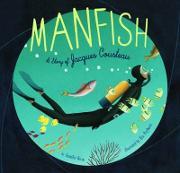Goal 17 Strengthen the means of implementation and revitalise the global partnership for sustainable development.The SDGs can only be realised with strong global partnerships and cooperation.
A successful development agenda requires inclusive partnerships — at the global, regional, national and local levels — built upon principles and values, and upon a shared vision and shared goals placing people and the planet at the centre.
This concept of a shared vision and placing people and the planet at the centre of decision making is the reason we need to start the thinking about, and concern for at a very young age. Children do have empathy, they are good problem solvers and are capable of critical thinking so we need to start reading picture books that encourage these. Don't alarm them but arm them.
Select books to read here.
Any book that encourages teamwork or working towards a common goal, while also allowing for informed dissent and questioning is a good place to start. I would probably also leave this goal to last so it can be examined in the light of the others and how all the goals need to be addressed in order to achieve the best results, especially when there is a 2030 timeframe.
If you follow up on children's rights then Alain Serres and Aurelia Fronty's I Have the Right to Save the Planet is a perfect place to start.
Here is the blurb:
All children have the right to learn about the world, to celebrate the water, air and sunshine, and to be curious about the animals and plants that live on our planet. All children also have the right to learn about endangered species, to be concerned about plastic in the ocean, and to understand what a changing climate means for our Earth.
Scientists tell us that every living thing is connected. When we cut down forests, we destroy animal habitats. When we throw plastic in the garbage, it never really goes away. When we spray pesticides on our fruit and vegetables, we poison the earth, animals and ourselves.
What can children do to help? All children can draw posters of endangered animals to raise awareness. All children can send a letter to the leader of their country, signed by every member of their family. All children can protest along with their parents. Children have the right to do all these things as proclaimed in the United Nations Convention on the Rights of the Child. All children have the right to try to help our Earth, in whatever ways they can.
This is an expensive book to buy, but it is read on
epic! You could link it to David Attenborough's film clip
How to Save Our Planet if you haven't already shown it earlier in your Book Club sessions.
This book suggests things students can do - children can draw posters of endangered animals to raise awareness. All children can send a letter to the leader of their country, signed by every member of their family. All children can protest along with their parents. Children have the right to do all these things as proclaimed in the United Nations Convention on the Rights of the Child.
So perhaps the next book to read should look at things children can do. Books such as these will give them ideas
Alternately, if your students are older, this could be the place to use one of those books that reduces the numbers of people to a manageable number so that students get a better idea of the proportions involved. You could use
David Smith's book is online in several places and there are also many versions of teaching notes. This idea is also an animated
filmclip.
And then follow these with Hillary Rodham Clinton's
It Takes a Village to bring the whole idea down to their own village.
From the booklet:
• We read...
Congratulations you have read 17 books and you now are very aware of the United Nations 17 Goals for Sustainable Development. You are well informed to think about the future of the world!
Before I read all of these books, I thought...
but now I think...
 • any book by Fernando M. Remiers will help you learn more about what is important for students to know.
• any book by Fernando M. Remiers will help you learn more about what is important for students to know. 














































